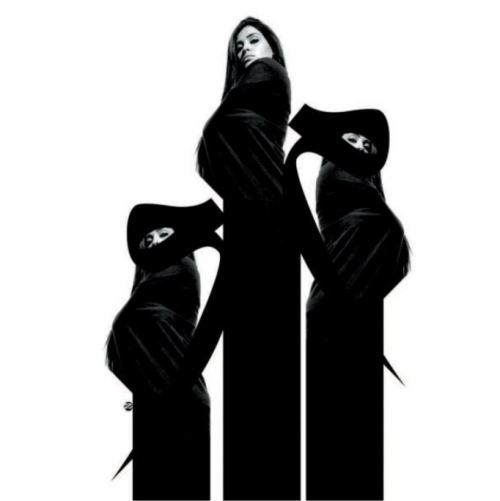About Bijan Sayfouri
Bijan Sayfouri, a photographer, graphic designer, and teacher, was born in Kurdistan. Sayfouri went to the Faculty of Fine Arts in Tehran, studied graphics, and graduated in 1993. He started his professional career in the late 1980s in his personal studio in Tehran. In 2001, he founded the "Rang-e-Panjom" group with some of his friends. In 2003, he won an honorary diploma from Iran's first book design exhibition. A year later, he won the poster prize in the first poster exhibition of the Islamic world. His first international experience took place in the same year, 2005, at the 50-50 gallery in Palermo. In 2006, at the invitation of Morteza Momayez, he started working as the head of the Iranian Graphic Designers Association's cultural committee. In 2006, together with 55 artists from all over the world, Sayfouri was invited to participate in the "Remaster" project to re-create the world's most important artistic masterpieces. In 2012 and 2013, his works were exhibited in London and Dubai Opera Gallery group shows. Also, in 2015, Ankara Art Gallery hosted his works in the exhibition "Common Shortcomings." Sayfori often uses calligraphy (especially Nastaliq script) or typewriter letters in his posters. In addition to graphic design, he has worked as a lecturer in art schools. Examples of his works include the Tarh-e-No Publications logo (2004), the creation of the book Nezam-e-Goftar cover (2005), the Hakim Razi commemoration poster (2005), and the Happy New Year poster (2006).
After 2010, Sayfouri also had exciting experiences combining photos, prints, and graphics. In the most famous examples of these works, photographed figures of veiled women sit next to each other in symmetrical or semi-symmetrical compositions with letters of the alphabet and motifs such as the crescent moon. In addition, some of the works of this period (such as "Just Injustice") of Sayfouri take a tone of protest against women's social issues with interventions such as crossing out the eyes or choosing the title of the work itself. Finally, in 2013, he took a series of close-up photos of Persepolis's capital motifs and architecture.
After 2010, Sayfouri also had exciting experiences combining photos, prints, and graphics. In the most famous examples of these works, photographed figures of veiled women sit next to each other in symmetrical or semi-symmetrical compositions with letters of the alphabet and motifs such as the crescent moon. In addition, some of the works of this period (such as "Just Injustice") of Sayfouri take a tone of protest against women's social issues with interventions such as crossing out the eyes or choosing the title of the work itself. Finally, in 2013, he took a series of close-up photos of Persepolis's capital motifs and architecture.
The Most Expensive Artwork
At Auctions
First Attendance
13 April 2011
# Attendance
4
# Artworks
5
Average Realized Price
11,807 USD
Average Min Estimate
15,590 USD
Average Max Estimate
26,005 USD
Sell-through Rate
60%
Average Growth of Artwork Worth
-25.586%
Timeline
Bijan Sayfouri's The Other Half exhibition
1 May
Neostalgia exhibition
17 October
1Ere Vente a Dubai International Modern And Contemporary Art auction
22 October
اولین دوره حراج تهران auction
22 May
Visions d'Orient - De l'orientalisme à l'art contemporain auction
4 November
Photographs and Orientalist Art auction
13 April
